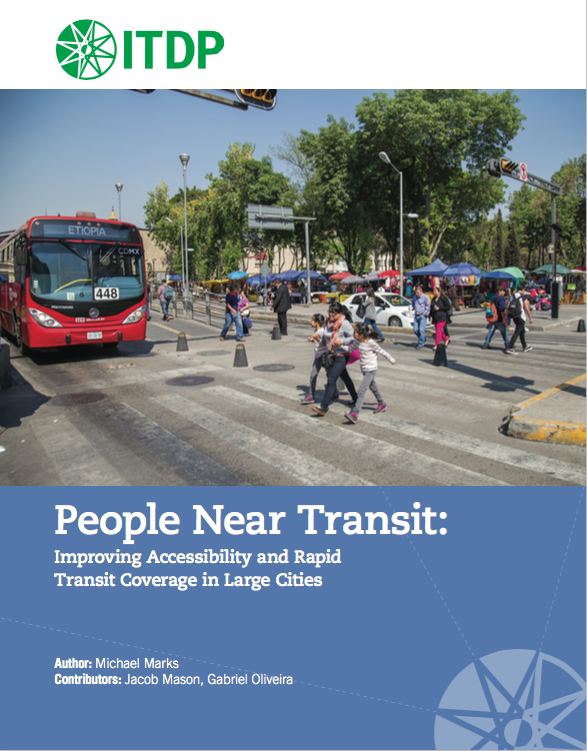
World’s biggest cities growing without adequate transport planning, says new report
19 October 2016
by Nick Michell
Many of the world’s most important cities are expanding rapidly without adequate transportation planning, according to a new report released by the Institute for Transportation and Development Policy (ITDP).
The report measures the number of urban residents that live within a short walking distance to rapid transit with a new metric, People Near Rapid Transit (PNT), and applies the metric to 26 major cities with high-capacity mass transit systems and their greater metropolitan regions around the world. Of the cities surveyed, the city of Paris earned a perfect score and the metro regions of Washington DC, and Los Angeles were among the worst.
“The PNT metric illustrates how unplanned urban and suburban growth focuses on automobiles and only those who can afford to drive,” said Clayton Lane, Chief Executive Officer, ITDP. “Washington DC, Paris, and Beijing are major examples of cities that have expanded beyond prescribed political boundaries without effective regional transport plans. Larger integrated rapid-transit networks serve more people and limit climate change—but they don’t grow without foresight and planning.”
The PNT metric was established by ITDP researchers to measure the number of residents that live within 1 kilometre of rapid transit. The report, People Near Transit: Improving Accessibility and Rapid Transit Coverage in Large Cities, highlights that very few cities are investing in the rapid transit systems that serve the less wealthy communities living outside of the urban core, even in Europe and especially in North America.
For the 13 cities in industrialised countries that were scored, the average PNT was 68.5 percent, while those cities’ metropolitan regions averaged 37.3 percent. The metro regions of the six US cities averaged a score of 17.2 percent.
 “Mass transit systems should grow as cities grow; yet in most cities, governments still rely on automobile traffic as the primary way of getting people around,” added Lane. “In today’s megacities, road space is already massively congested with car ownership presently at only 10-30 percent, yet building more roads remains a misguided top infrastructure priority. Governments need to better serve the other 70-90 percent of the population without cars, and provide better mobility choices for everyone.”
“Mass transit systems should grow as cities grow; yet in most cities, governments still rely on automobile traffic as the primary way of getting people around,” added Lane. “In today’s megacities, road space is already massively congested with car ownership presently at only 10-30 percent, yet building more roads remains a misguided top infrastructure priority. Governments need to better serve the other 70-90 percent of the population without cars, and provide better mobility choices for everyone.”
The rapid transit systems of Seoul and Beijing, the two largest cities in the survey, served the most people by far. Almost 11 million people live within 1 km of each system and their scores reflect the population density.











